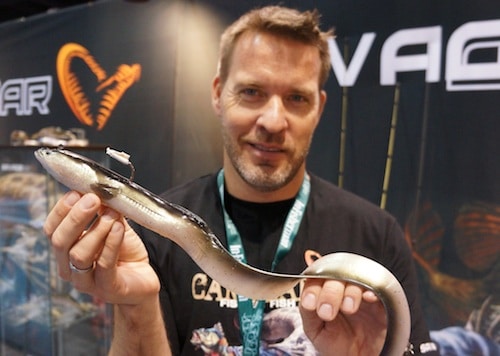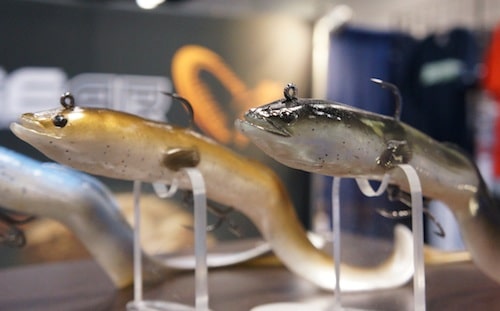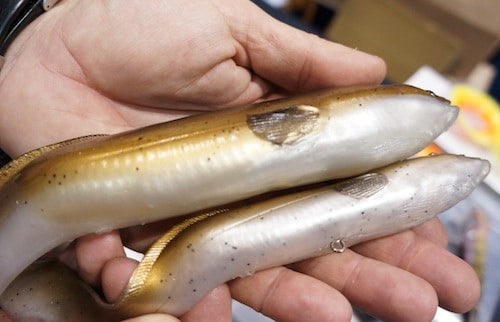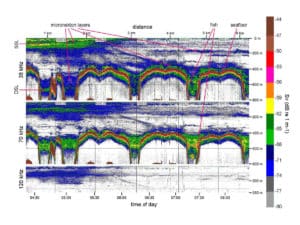
mm eel icast
Sometimes, tackle innovations that wind up on the floor of the annual ICAST tackle show stem from the darnedest places — such as airplanes!
Mads Grosell, product manager for Savage Gear, was on a flight from the Far East to his home in Copenhagen not long ago when the idea for the company’s new 3D Real Eel series hit him.
“I was reading a magazine article on 3D scanners used in the industrial-design business,” says Grosell. “And I said, ‘That’s it!’”
Two days later in Copenhagen, Grosell was like a mad scientist — he’d gotten his hands on a 3D scanner and a bunch of frozen fish species and was scanning away!
That’s right — scanning frozen fish.
“When you use 3D scans, you’re able to get details from the fish that are absolutely impossible to generate from hand carvings,” says Grosell, a lure designer know widely for his fantastic European bait designs, which have recently been brought to the United States via a relationship with tackle manufacturer Okuma.
“Once I get the scanned file on the computer, I can manipulate it and give them slimmer tails or whatever I want,” says Grosell, noting he’ll go through 50 frozen prey specimens to find the exact replica he’s after.
The use of these 3D scanners is quite common in other industries, but Grosell says it’s never been attempted in the fishing tackle business.
“We’re the first,” he says. “I was really wanting to do something unique and put us on the map. Of course, there are a lot of ways you can copy others and integrate concepts from other lures, but that’s short term.”
Instead, the soft-plastic, twin-injected eels — as well as a line of herring and trout soft baits Savage Gear is producing — are absolutely works of art, with incredible detail and lifelike action. They’re designed to be fished on weedless hooks or jigheads and ought to be dynamo for stripers and cobia in deeper water or trout, snook and tarpon on the flats.
One more thing – the 3D scanning process is extremely fast when compared with more traditional methods of hand-carving lure prototypes in clay or wood.
“I can do a scan and have a prototype done in three days,” Grosell says. “It would take six months with the hand-carving process.”
Innovation. It’s what ICAST is all about.








